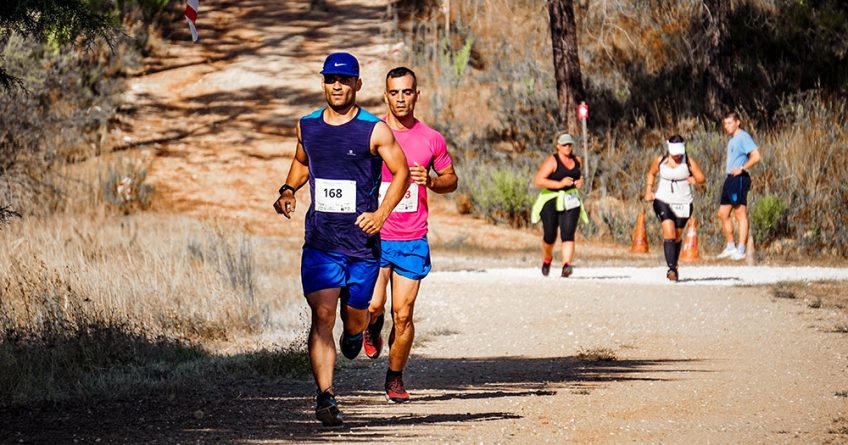Running is a great way to get in shape. But it can also lead to many different types of injuries. Knowing about common injuries and how to prevent them can keep you on track toward achieving your fitness goals.
“One way to help prevent injuries is to consult a physician or fitness expert before you begin your program,” says Richard Bonfiglio, MD. “During this visit, you’ll be able to identify your exercise goals and formulate an exercise plan. You can also uncover your injury potential and learn how to minimise your injury risk.”
Bonfiglio recommends the following strategies to prevent injuries.
Identify Your Running Goals
You may choose to begin running to improve your physique, lose weight, increase cardiovascular fitness, or socialise with friends. Whatever the reason, it’s a good idea to identify this goal when creating your exercise program.
“Your regimen will vary based upon your goal,” Bonfiglio says. If you want to improve cardiovascular fitness, you should run at a quick pace to maximise your heart rate. If you’re running to lose weight or reduce body fat, it’s better to run at a slower rate for a longer period of time.
Depending on your goal, your physician or personal trainer may determine that a modest walking or jogging program is appropriate, he explains. “Setting goals helps you follow a safe pace and keeps you from overexertion, that usually results in injury.”
Have a Physical Evaluation
Certain health problems may hamper your running performance and increase your risk of injury. Specifically, osteoporosis, arthritis and other degenerative joint diseases can increase injury risk and should be addressed before you start to run.
Stretch Before and After You Run
Doing so can prevent some of the most common injuries. “It’s most important to stretch muscles that go across two joints,” Bonfiglio says. “These include the calf muscle, which runs across the knee and ankle and the hamstring which goes across the knee and hip.”
Begin each run at the pace of a brisk walk or gentle jog; cool down at the same pace at the end of your run.
Wear the Right Shoes
Buying shoes at an athletic store, where a trained salesperson can help you choose a shoe that fits your foot type and running environment, can help prevent injuries.
Common Injuries
The following injuries are common among runners. Bonfiglio recommends ways to avoid and treat them. If symptoms persist, see a physician.
Achilles’ tendonitis
This injury is characterised by dull or sharp pain along the back of the tendon, calf tightness and early morning stiffness.
“Stretching can help prevent this injury,” Bonfiglio says. Rest and allow your body to heal. You may have to put off running until the pain is gone.
Heal pain
Pain in the bottom of the heal indicates an injury. Physicians use the terms plantar fasciitis and post-static dyskinesia interchangeably to refer to an inflammation of the plantar fascia; a thick, fibrous band of tissue at the bottom of the foot.
Heal pain can largely be attributed to the stress on the feet caused by daily activities and exercise that magnifies misalignment in the feet, particularly if improperly-fitted shoes are worn.
Excessive exercise and occupations that require people to spend a lot of time on their feet may stretch these structures beyond their limits. This stretching can lead to muscle tears and bone spurs.
Prescription orthotics — in-shoe fittings to support, align, prevent or correct injury, and improve function of your feet — are very effective, non-invasive solutions. They can be used in conjunction with therapy to help those with plantar fasciitis, says Brian K. Tracy, BSK, a podiatric sports medicine physiotherapist.
Proper stretching, including some heal raises, can also help prevent such an injury. Anti-inflammatory medication and ice compresses can treat it. Again, you may have to keep off the track.
Shin splints
Shin splints feels like an aching pain along your shinbone. It typically occurs during and after exercise and is the result of overstraining muscles where they attach to your shin.
The most common cause is overuse or overtraining along with poor foot and leg biomechanics. Stop whatever you are doing if you experience this problem. You may need orthotics to correct your running motion. A new approach to how you exercise may be required to prevent a worsening of the condition.
Stretch with Movement
“Stretching decreases the risk of injury when exercising.”
This bedrock of sports medicine usually fails to mention an important fact: The wrong sort of stretching can actually increase the risk for injury when you exercise, and — unfortunately — many experts have been preaching the wrong way to stretch before a workout for years.
Slow, static stretching, where you hold a stretched position for some time, is at issue. Although many fitness experts recommend limbering up with such stretches before a workout, no systematic studies ever verified that they helped.
When sports physicians began testing the idea, they found that in some instances people who used static stretches before exercise had more pain or injuries afterward.
Static stretches relax muscles, which is great after exercising. Before a workout, however, a brief warm-up and active stretching warms up muscles and joints and increases blood flow. Active stretching simply means moving your body through its full range of motion, but without holding any position.
If You Get Injured: Hot vs Cold Packs
So when should I use ice vs. heat? This is a question many ask when suddenly experiencing sudden onset of pain, for example after playing sports or when doing chores around the house or after going for a run.
Timing is everything. As soon as possible, using ice is best since the goal is to reduce inflammation. Typically applying ice within the first 24-48 hours is recommended.
For acute injury and within the first several days, follow the rules of RICE:
R = rest
I = ice
C = compression
E = elevation
Coolness First
One of the more effective and inexpensive ways to apply cold is to place cubed or crushed ice into a plastic bag. Make sure to wrap the bag in cloth or a towel to avoid direct contact with the skin.
By the way, crushed ice conforms to irregular contours of the body and may work best. Check your freezer for bags of frozen vegetables. That can work nicely, as well.
Applying ice “off and on” for 15-20 minute intervals often works best during the initial 24 hours following injury. If you are icing your hands or feet, up to 10-minute intervals will work better. Keep close track of time though, especially if you have problems with circulation.
Heat for Healing
Applying heat can also be effective, but not following acute injury. This type of application promotes circulation and delivers healing nutrients to areas injured. Sounds like a great idea, but applying heat should not be done right away because it’s important to reduce swelling, and doing this is counterproductive.
You can consider applying warm moist compresses following 2-3 days. That usually works nicely. Hot and cold application-type products are very effective and can be purchased locally.









